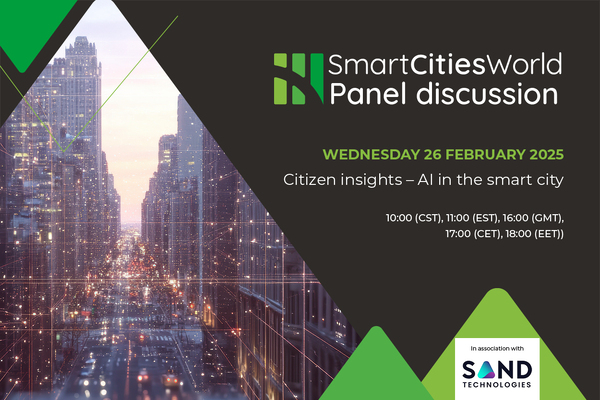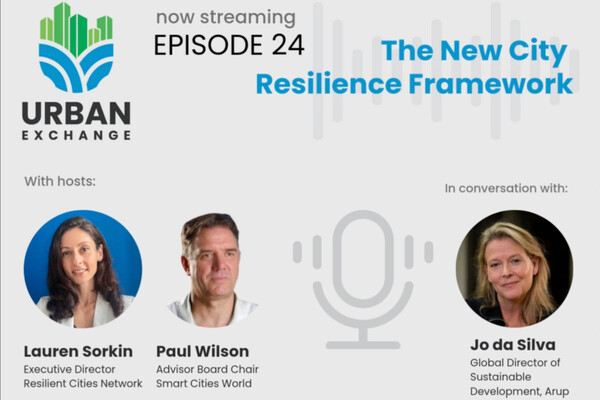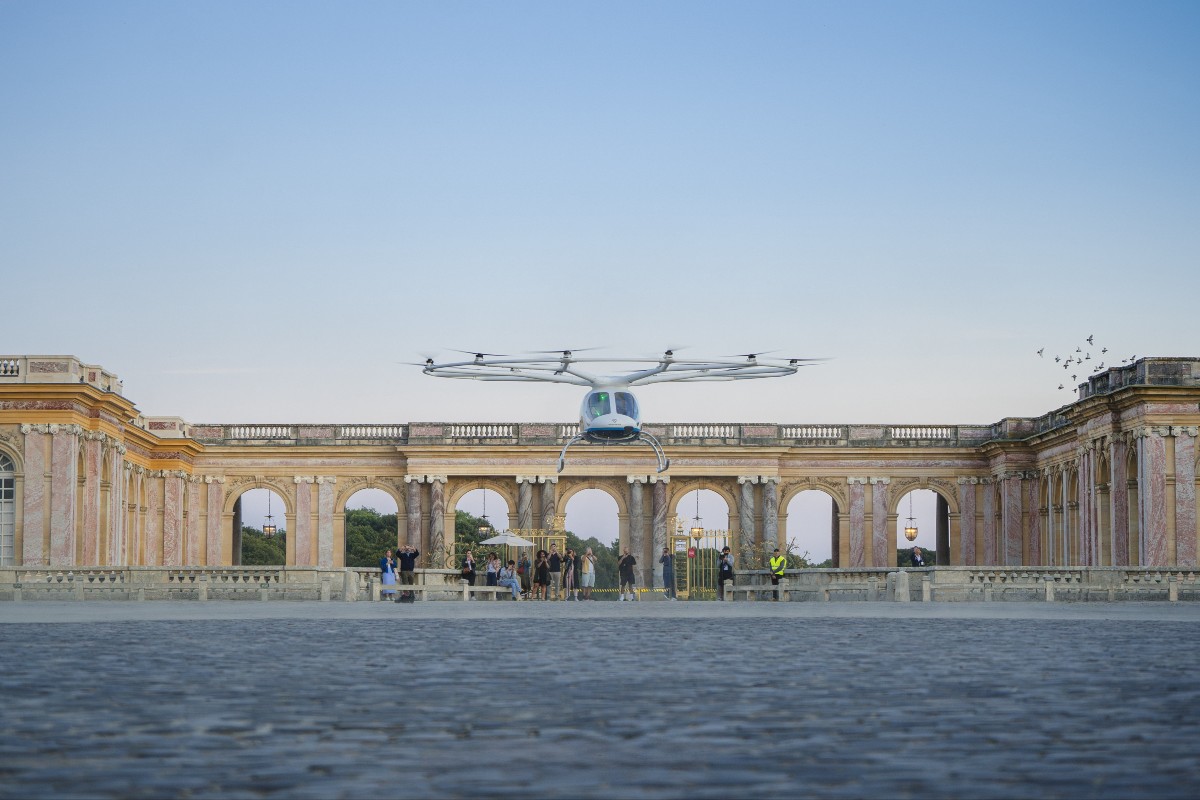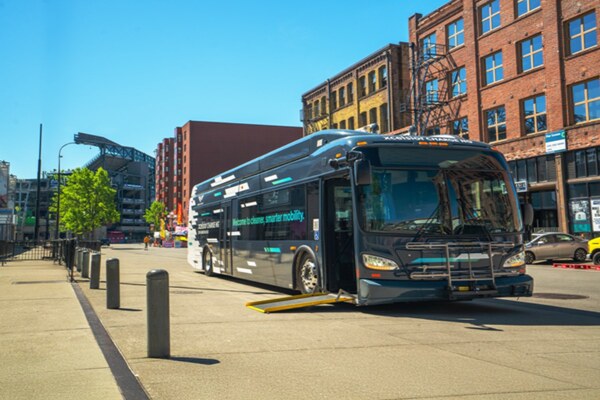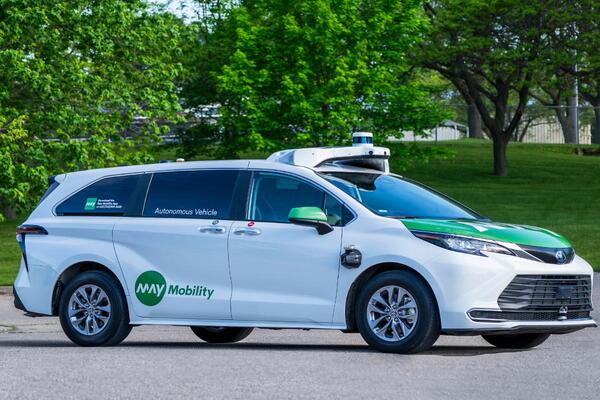Special Reports
SusHi Tech Tokyo 2024: experience ‘Tokyo 2050’ todaySponsored by The SusHi Tech Tokyo 2024 Showcase Program Executive Committee
Sameer Sharma, General Manager, Intel, Smart Cities/Intelligent Transportation
Sameer Sharma talks about the importance of evolution and reinvention for people and organisations and explains why cities must quickly break out from their "analysis-paralysis" mode.
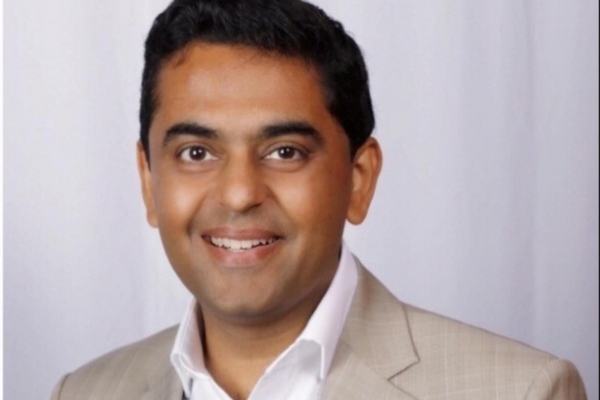
Kurrant Talent: You like to talk about “happier cities” instead of “smart cities”. How have you seen citizens’ response to smart city projects evolve recently?
Sameer Sharma: This year has been unprecedented in terms of how it has challenged us and the breadth and severity of what we are facing as a global community. A year ago, when talking about smart cities, the focus was on challenges like job creation or how we increase the urban density and how do we get people to move around more effectively?
In February-March 2020, the conversation fundamentally changed to how do we deliver basic services to people? How do we start thinking about getting past the Covid-19 phase and reopening? How do we ensure not urban density, but urban separation in terms of social distancing? It also changed in terms of urgency: we cannot spend forever debating and being in this analysis paralysis mode, we’ve got to move here and now.
My peer who handles healthcare as a market for Intel said we have made more progress on telehealth adoption in the last six to eight months than we did in the last 20 years. A lot of those psychological and other barriers were overcome because of this sense of urgency.
Suddenly, cities were asking us, ‘hey, I’ve got existing infrastructure, I’ve got cameras, can they be used to understand crowding and social distancing, PPE compliance, and even contact tracing. And the good news is some have built their infrastructure to be adaptable so they were able to add new algorithms and capabilities and make it relevant and meaningful to the problems we were trying to solve.
We cannot spend forever debating and being in this analysis paralysis mode, we’ve got to move here and now
Others, though, painfully discovered that some of what they had put in place was not really made for evolution. It was fixed functionalities that couldn’t be adapted. This has all led to some extremely good quality conversations as we build the next generation of infrastructure and do it in a way that doesn’t just solve the problems of the pandemic, but whatever crisis comes next.
Intel put together a pandemic response initiative and our CEO allocated $50 million to be invested in tangible solutions that help solve Covid-19 related issues. We invested in 100-plus partnerships. One of these partnerships resulted in developing technology to expand hospitals’ ICU capacity by making the regular hospital beds remotely manageable. Another good example is work we did with Rice University’s smart cities accelerator. It has a start-up that analyses Covid-19 DNA in the city wastewater, and based on that, it can start creating a dashboard of the hotspots in the city so corrective action can be taken.
We’ve also created a Covid-19 eBook, which is focused on citizens. Rather than thinking about technology solutions, it’s about how we can get them closer to a normal day, or the new normal day and minimise exposure to and spread of the disease. From the moment they wake up, it shows them how they can do more healthcare monitoring, remote education for the children, undertake more contactless payments, comply with PPE and social distancing. We hope this will also help to lower their stress levels. Citizens won’t just start coming out and doing stuff as before, they have to feel comfortable.
KT: Intel solutions power a number of applications in different fields. How important are smart cities for Intel in terms of revenue generation, R&D investment and M&A effort?
SS: If you take a step back and you look at Intel’s evolution from what we call a PC-centric company – which has been our heritage and continues to be the most important market for us – to what we call a data-centric company. The data-centric company refers to having the best silicon and software with partner solutions, wherever data is either created, analysed, stored or transmitted. That’s really the transformation we’ve been on for the past seven years.
If you take the data-centric view and apply it to cities, you realise quickly that cities are a source of unbelievably large amounts of data. Our estimate is that cities are creating about 16.5 zettabytes of data per year. These large numbers sometimes lose meaning so I’ll use analogies. If a cup of coffee is one gigabyte of data, that’s enough coffee to fill up the entire Great Wall of China. It’s the amount of data you would generate if you do full high definition recording non-stop for 36,000 hours. And we are adding to this data all the time.
If you take the data-centric view and apply it to cities, you realise quickly that cities are a source of unbelievably large amounts of data
So, you have to be intelligent about what data is to be analysed at the edge and what you need to keep in the cloud for longer term use. What we’re doing is tapping into the big investments we are making in edge AI, 5G transformation, and the cloud. So, let’s take the traffic camera as an example. Maybe there’s some interesting data about the number of cars per hour but really, what we need to know is did an accident happen? Is congestion starting to build up? Did a parking spot become available? Analysing the data more accurately and discarding the rest of it is more meaningful. This is one simple way in which we’re able to narrow down the focus and have a more intelligent way of cutting through this data tsunami.
On the growth side, this is one of the fastest growing markets for us in our IoT group. On the M&A side, we partner closely with start-ups who approach us but also our Intel Capital portfolio companies.
KT: There is a lot of talking about how AI and edge computing will power smart cities and we have seen first use cases emerge like smart parking. What are the use cases you have been investigating and how does Intel solutions enable them?
SS: When you look at New York and San Francisco, they have very different needs and the demographics and the state of infrastructure is different. What is creating jobs is different. So how do you create enough common themes and common scale? That’s been a challenge because we need to scale to be able to reduce the costs of computing, yet you need this hyper-customised solution for every city. Four years ago, we interviewed city leaders, stakeholders, our partners, OEMs, telcos and software providers to identify common themes and issues. And what emerged are the three top priorities of mobility, public safety and sustainability and resilience and then you have use cases underneath these.
You have to be intelligent about what data is to be analysed at the edge and what you need to keep in the cloud for longer term use
We need to look at digital infrastructure as digital highways We don’t build roads and say ‘this is a road for the bus, this is a road for the car and this is a road for the people’. These underlying digital infrastructures have to be adaptable over time through over-the-air upgrades and things like software virtualisation to add new capacity and use cases. This is not the infrastructure of yesterday where you installed something and forgot about it for 20 years until it broke down. This infrastructure needs to monitor itself; it needs to be capable of predictive maintenance and even self-heal and repair itself at times. We need to think big, start small and move fast. This builds credibility and helps to cope with cultural change and moving upwards.
KT: What is the strategy behind the Intel Solutions Market Place and how does it contribute to reinforce Intel’s position in IoT and smart city? Can you illustrate this with one or two examples?
SS: The fundamental premise is simple: it’s based on what our customers and our end-users were telling us, which is when they tried to adopt a solution it was unclear how it fit into the broader scheme of things. They also wanted to know how to distinguish between a research-science project versus something ready for deployment that could scale. We took that feedback to heart and sat down with our solution providers and said, ‘how do we create a process or a marketplace that allows people to narrow down and bring out the signal from the noise?’
We need to think big, start small and move fast. This builds credibility and helps to cope with cultural change and moving upwards
Users don’t always have the technical expertise, or the time or the investment to do this analysis. So, anything that’s on the Intel market-ready solutions marketplace has to be able to be deployed in real life, be scalable and there must be a physical roadmap of how the solution will evolve over time. Around 80 per cent of these solutions have seen repeated deployments, which to me indicates we are addressing a real demand.
KT: You have spent over 18 years at Intel. This is not common in the tech industry; what made you stay at Intel so long?
SS: Firstly, the role Intel plays in the technology ecosystem. If I look at my career, from starting as a design engineer, to managing embedded products to leading some of the charge in mobile computing and tablets to now driving new markets for IoT. It doesn’t feel like I’ve done one job. I’ve reinvented myself within the company and with our partners, as the company has also reinvented itself by going into new markets. So there is no need to go anywhere else. Also, if you’re passionate about certain areas, which I am, it’s as much about bringing that passion to work every day and working with really smart people. Finally, everything I need for personal growth is right here and Intel is so supportive of personal growth and career development.
KT: You are now general manager for cities and transportation. What is your mission within Intel and what does your day-to-day look like?
SS: I lead a global team and our mission is simple: to bring the best of our technology portfolio to our target markets, working with our customers, partners and the ecosystem. One of the internal values is to positively impact every citizen on this planet. That may seem like a corny statement but then, when you start looking at the solutions we are building and how they are benefiting people and improving the quality of life, in many parts of the world, it’s a very gratifying role and mission. Every day I get fired up, based on what I see and the impact it has.
Because of the global nature of the teams, I usually start early and finish late, because we cover a broad range of time zones. When I was able to travel, I would be on the road about half the time visiting both direct and end customers and our teams in different parts of the world. I spend my time equally between our product strategy and our technology strategy, interfacing with our engineering teams. I also work with external stakeholders to obtain their key inputs – whether it’s policy or regulatory stuff, or their needs.
I’ve reinvented myself within the company and with our partners, as the company has also reinvented itself by going into new markets
Every day, I’m constantly rebalancing. For example, we’ve just launched a new initiative for Intel, oneAPI, that makes it easy for developers to build applications on top of any Intel product, whether it’s a CPU or GPU and FPGA, or any other sort of architecture. So, we’re doing a deep dive into how we position it and get more traction to the developer community. Then as the new US Administration comes in, we’re looking at what are going to be their focus areas and so where should we invest. And how do we engage with those government entities.
Obviously, I also spend some time on career and personal growth with my team. I manage six director-level people and sub teams underneath them. Then we have people on the edge like the sales and engineering teams as well as horizontal teams. I interface with around 500 people.
KT: What does it take to make it to such a position within a leading technology company like Intel?
SS: Firstly, I was lucky enough to have mentors, some very senior people, who have guided me. This happened in part through luck but also because I asked for that help. What is really gratifying is that, as a company and as an ecosystem, we have implemented mentoring much more formally and documented it into development plans.
I started as an engineer but somebody saw the potential and said, we believe you can do something more. The second factor is, I’m also curious and want to learn more. For anybody who wants to grow, this is a basic requirement: you have to be technically curious and ask the right questions and you have to recognise that you may not have all the right answers.
If you want to grow, you’ve got to be agile in everything you do, but also how you think about yourself and your skills
The third aspect is really critical: you need the sort of community of people around you that you can bounce ideas off. One of the things I advocate within my team is what we call the Socratic debate, which is, you’re not attacking each other, you’re attacking the problem. And, therefore, you’re having a conversation and bringing as many ideas, views and perspectives as you can on the table.
Finally, there is agility: if you want to grow, you’ve got to be agile in everything you do, but also how you think about yourself and your skills. These things have helped me and this is the advice I give to the younger people I hire.
You might also like:
- See our People & Skills section
- Marie Hélène Mansard, business development director, Asia-Pacific, Axis Communications
- Xavier Mathieu, CEO, Birdz
